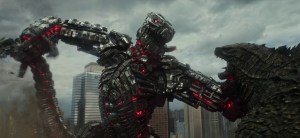As of 5 a.m. Eastern time on Saturday, hundreds of baby squid are officially floating out amongst the cosmos. SpaceX‘s Dragon cargo ship docked at the International Space Station in the twilight hours of the weekend, delivering a plethora of supplies to the orbiting satellite. The ship itself launched on Thursday from Florida’s Kennedy Space Center and took just about 40 hours to sync up with the station. Stowed away in the ship’s cargo hull 100 baby Bobtail squid and thousands of tardigrades — microscopic organisms commonly referred to as “water bears.”
Videos by ComicBook.com
“It was a great approach and was awesome watching it come on in, and we’re glad it’s here,” astronaut Shane Kimbrough told NASA and SpaceX flight operators (via Space.com). “Looking forward to all the science and other goodies that it brought up along with our EVA solar arrays. It’s going to be a great few weeks as we get into Dragon and get things out.”
As for animals aboard, NASA sent them along to see how they’d do during space travel, to see if either species would be severely impacted once out amongst the stars.
Jamie Foster, a principal investigator for this experiment previously explained, “Animals, including humans, rely on our microbes to maintain a healthy digestive and immune system. We do not fully understand how spaceflight alters these beneficial interactions.”
“One of the things we are really keen to do is understand how tardigrades are surviving and reproducing in these environments and whether we can learn anything about the tricks that they are using and adapt them to safeguard astronauts,” Thomas Boothby, the experiment’s other principal investigator added.
This current Dragon module is expected to remain attached to the International Space Station for the better part of a month before detaching and splashing down somewhere in the Atlantic Ocean. This is the second such mission to dock autonomously on the space station, with crews on the ground guiding Dragon where it needed to go.
Kimbrough and fellow Expedition 65 crewmember Megan McArthur observed the docking from a nearby observatory aboard the space station to ensure the docking went as smoothly as possible. Luckily for all involved, it appears to have gone on without a hitch.
Cover photo by GIANRIGO MARLETTA/AFP via Getty Images









